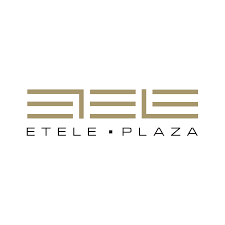Online Stores Take Growing Slice of Fashion Market In Hungary
- 4 Apr 2019 9:05 AM
- Budapest Business Journal

Glami.hu, a Czech Republic-based company known for its fashion-themed search engine, published its findings a few weeks ago, providing insight into some recent trends in e-commerce. “2018 was the year of online fashion trade,” the report insists.
According to its data, the revenue of online retailers is growing significantly faster than offline counterparts. In 2018, online retailers active in Hungary made more than HUF 153 bln, a 12% growth compared to the figures for 2017.
Already online sales account for 22% of the sector’s market share. This, according to Glami, could rise in the next four years to 28%, bringing in a total of HUF 229 bln in revenue.
Looking at customer preferences, it seems unlikely that online stores will ever fully replace bricks and mortar fashion stores. The majority of those who buy clothes both online and offline say they still prefer traditional shops, with only 28% giving a preference for web shops over physical ones.
Convenient Alternative
For many, buying online is little more than a convenient second choice over going to traditional stores. When asked about the advantages of using online stores, 61% of those surveyed by Glami said that the main advantage of online stores is that they can use them even when offline ones are closed.
Some 51% said that they shop online to save time, while only 47% praised online stores for having a wider selection and 35% for better pricing.
When buying fashion items online, the main concern is always the possibility that the clothes will not fit. Many web shops address this problem with a return policy, where they will take back and replace an item if requested. This is one of the areas where more localized web shops have a clear advantage.
While ever more people order clothes from abroad, many (28% of those surveyed) say they are hesitant to order from foreign stores due to unclear return policies and long or expensive shipping processes (18% and 16% respectively).
The vast majority of shoppers (87%) prefer Hungarian language websites, regardless of where the company’s warehouses are or where they are based. The lack of a Hungarian language option is commonly associated with questionable quality: 59% of those surveyed said that they do not trust the quality of products that they ordered from shops with only a foreign-language website.
Not surprisingly, the online fashion market is dominated by multi-national retailers that have web stores in Hungarian. The leading online retailer is Sweden-based H&M, a well-known fashion chain with many physical stores all over the country. However, the second most popular one is Hamburg-based Bonprix, a company that only serves online orders.
While competition between multi-nationals is intensifying, the growth of the market does still allow smaller, new competitors to rise. One example is Ecipo.hu, a Hungarian web shop offering shoes and accessories, which was already the third most popular fashion retailer in 2018.
Sneaker Mania
According to Glami’s research, the three most important trends in the Hungarian online fashion market are sustainability, local brands and a “sneaker mania”.
While brands that use ethical supply systems and nature-friendly processes are not among the market leaders (since these are usually not the most well-known brands), research shows a correlation between the growth of sales and how much the brand communicates sustainability.
This means that some brands could increase sales if they advertised their commitment to sustainability more clearly or adopt such policies if they haven’t yet done so.
Generally, people are willing to spend more on fashion products that were manufactured using sustainable methods. In Hungary, 67% say they are willing to pay more for “ethical products”.
But while many people are willing to pay extra for more environmentally friendly products, fewer shoppers want to pay more just to support local manufacturers. While consumers are interested in Hungarian brands, 83% are interested in buying local only if they find the price reasonable. Only 8% said that they are willing to pay more for a clothing item that was created by a Hungarian designer.
Glami’s research also shows that athletic clothing is still the most popular choice of style in Hungary: 60% of its users say they prefer to wear such cloths for daily (non-athletic) activities. Sneakers are especially popular, with many consumers choosing them for work or even formal events.
Sneakers are the single most popular fashion item right now and are responsible for more than double the volume of the second most popular item: sandals.































LATEST NEWS IN shopping